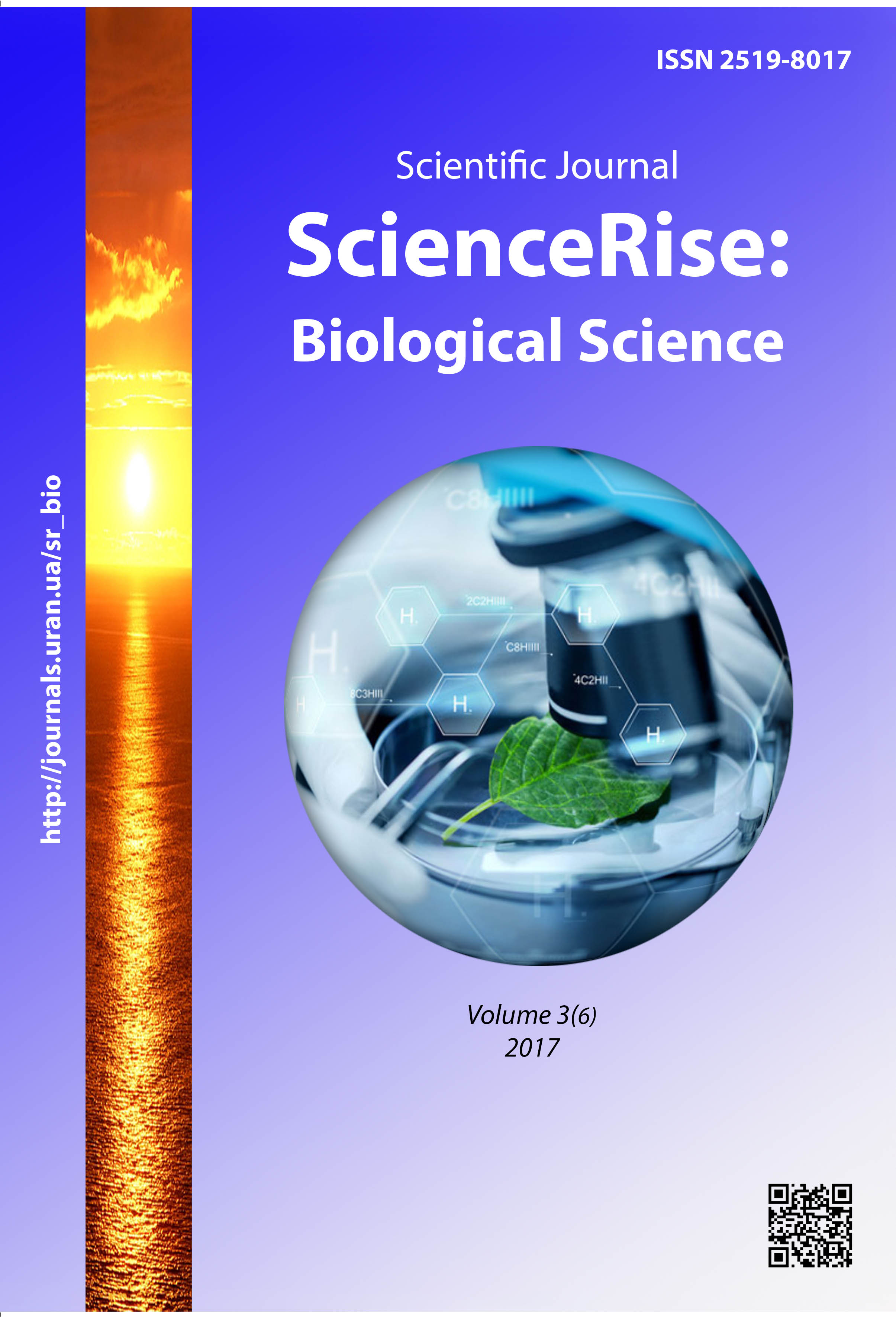Environmental assessment of the state of atmospheric air in conditions of different technologies of poultry production
DOI:
https://doi.org/10.15587/2519-8025.2017.105062Keywords:
environmental assessment, poultry farming, atmospheric air, pollution, nitrogen, sulfur oxides, hydrogen sulfideAbstract
Aim of research – the integral environmental assessment of atmospheric air pollution with hydrogen sulfide, nitrogen and sulfur oxides in zones of the intensive poultry farming and egg production.
Materials and methods. The research was carried out in zones of location of poultry enterprises of broiler and egg production by variants:
1. SPZ (sanitary-protection zone) – 50 m from poultry yards;
2. OD – 1 (observation district) 500 m beyond SPZ;
3. OD – 2 (observation district) 1700 m beyond SPZ;
4. Control 10 km from poultry enterprises.
Poultry enterprises are situated in Kyiv region in identical soil-climate conditions. The analysis of the content of aeropollutants NO2,SO2,,H2S in atmospheric air was realized using the gas analyzer 604-342EH07-02 (“KSM – 05” LTD, 2013).
Results of research and their discussion. The results of the quantitative analysis of mean indices of physical-chemical analysis of NO2, SO2, H2S content for 2014–2016 were received. The content of NO2,,H2S in atmospheric testifies to the stable tendency to the exceed of the mean maximum allowable concentration (MACm.d.) and maximal one-time allowable concentration (MAC max), except the control AC. For the integral environmental assessment of the state of air environment in zones of industrial poultry farming was offered the index of atmosphere pollution (IAP) and the complex index of atmosphere air pollution (Ciap). For eggs production ƩIAP may be set in such a way in order to decrease: H2S(7,94)≥NO2(6,69)≥SO2(6,43). In zones of boiler production the other tendency of Ʃ IAP change is observed: SO2(26,62)≥NO2(11,31)≥H2S(6,01).
Conclusions. Thus, the important and necessary condition for eco-friendly poultry farming is a system control of the state of atmospheric air and the content of priority and dangerous aeropollutants in zones of powerful poultry enterprises location. The use of IAP and Ciap is most optimal for the integrated environmental assessment of atmospheric air pollution with aerogenic pollutants
References
- MacLeod, M., Gerber, P., Mottet, A. et. al. (2013). Greenhouse gas emissions from pig and chicken supply chains: A global life cycle assessment. Rome: Food and Agriculture Organization of the United Nations (FAO), 172.
- Status of ratification of the 1979 Geneva Convention on Long-range Trans boundary Air Pollution as of 24 May 2012. Available at: http://www.unece.org/env/lrtap/status/lrtap_st.html
- Konvenciya OON pro transkordonne zabrudnennya povitrya na daleki vidstani. Available at: http://zakon3.rada.gov.ua/laws/show/995_223
- Moklyachuk, L. I., Lukin, S. M., Kozlova, N. P., Matrkoplyshvyly, M. M. (2014). Zagryaznenie okruzhayushchey sredy himicheski aktivnym azotom iz selskohozyaystvennyh istochnikov: problema i puti resheniy. Agroekologichniy zhurnal, 1, 13–21.
- Natsionalnyy kadastr antropogennyh vybrosov iz istochnikov i absorbtsii poglotitelyami parnikovyh gazov v Ukraine za 1990–2011 gg. (2013). Kyiv, 625.
- Gerber, P., Opioand, C., Steinfeld, H. Poultry production and the environment – a review. Animal Production and Health Division, Food and Agriculture Organization of the United Nations, Vialedelle Termedi Caracalla. Rome, 27.
- Broucek, J., Cermak, B. (2015). Emission of Harmful Gases from Poultry Farms and Possibilities of Their Reduction. Ekologia, 34 (1), 89–100. doi: 10.1515/eko-2015-0010
- Corkery, G., Ward, S., Kenny, C., Hemmingway, P. (2013). Incorporating Smart Sensing Technologies into the Poultry Industry. Journal of World's Poultry Research, 3 (4), 106–128.
- Boroday, V. P., Tertichna, O. V., Keyvan, M. P. et. al. (2014). Ekologichna otsinka stanu dovkillya v zonah virobnitstva produktsiyi ptahivnitstva. Suchasne ptahivnitstvo, 4 (137), 22–25.
- German, V. V. (2009). Ekologichna bezpeka pri virobnitstvi tvarinnitskoyi produktsiyi. Agroekologichniy zhurnal, 2, 5–8.
- Marchenko, O. A. (2010). Ptahivnitstvo – progresuyuchiy zabrudnyuvach atmosfernogo povitrya. Agroekologichniy zhurnal, 3, 34–38.
- Melnik, V. O. (2009). Ekologichni problemi suchasnogo ptahivnitstva. Mizhvidomchiy tematichniy zbirnik «Ptahivnitstvo», 63, 3–15.
- Kukurudzyak, K. V., Brigas, O. P., Tertichna, O. V., Mineralov, O. I., Revka, T. O. (2016). Ekologichna otsinka stanu atmosfernogo povitrya u rayonah roztashuvannya svinarskih gospodarstv. Kyiv: DIA, 70.
- Furdichko, O. I., Slavov, V. P., Voytsitskiy, A. P. (2008). Normuvannya antropogennogo navantazhennya na navkolishne prirodne seredovishche. Kyiv: Osnova, 360.
Downloads
Published
How to Cite
Issue
Section
License
Copyright (c) 2017 Olga Tertychna, Olena Bryhas, Olena Bryhas, Larysa Svaliavchuk, Larysa Svaliavchuk, Nataliia Miroshnik, Nataliia Miroshnik

This work is licensed under a Creative Commons Attribution 4.0 International License.
Our journal abides by the Creative Commons CC BY copyright rights and permissions for open access journals.
Authors, who are published in this journal, agree to the following conditions:
1. The authors reserve the right to authorship of the work and pass the first publication right of this work to the journal under the terms of a Creative Commons CC BY, which allows others to freely distribute the published research with the obligatory reference to the authors of the original work and the first publication of the work in this journal.
2. The authors have the right to conclude separate supplement agreements that relate to non-exclusive work distribution in the form in which it has been published by the journal (for example, to upload the work to the online storage of the journal or publish it as part of a monograph), provided that the reference to the first publication of the work in this journal is included.









